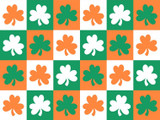The Top 10 Traditional Irish Wedding Presents
Posted by Ima Ocon on 10th Jun 2023
It's almost peak wedding season, and with it comes the rush of registries and gifts. We've selected some of our favorite traditional Irish wedding presents if you want to focus on the couple's Irish or Celtic heritage. In our journey to stay connected with our roots and cherish our Irish heritage
…






